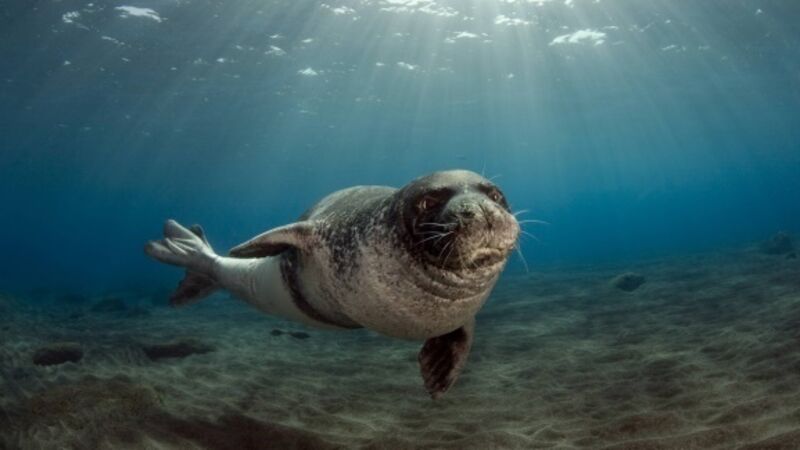The return of the monk seal

According to the Croatian Nature Protection Institute, there have been sightings recently off Cape Kamenjak in the north of country and along the coasts of nearby islands.
Members of the Mediterranean Monk Seal Group have taken over 4,500 photographs, and some video footage, of the new arrivals. The four or five individuals seen are not just casual visitors but have taken up residence.
Bigger than the common seal of Irish waters but smaller than our grey species, monk males are black with an off-white belly. Females are dark brown and whiter underneath. A solitary disposition and skin folds on the head, resembling a monk’s hood, led to the name.
Not much is known about this shy animal’s lifestyle. Males, thought to be promiscuous, are highly territorial at mating time. Females used to give birth on beaches but, with increased human presence, they now use caves with underwater entrances. The measure is only partially successful; pups are vulnerable to sudden tidal surges and freak storms. There is a glimmer of hope that with increased protection seals might be persuaded to return to secluded beaches. Mother seals were seen feeding pups in the open in 1945 and in 2008.
Irish grey seal mothers nurse their babies for a mere three weeks and then desert them, leaving their distraught youngsters to fend for themselves. Monk seal pups have a less Spartan childhood.
Although a mother spends most of the day at sea, she returns every few hours to feed her baby. Youngsters are weaned when four months old and reach maturity after four years. A seal can live to 45.
There are three species worldwide but one of them, the Caribbean monk seal, has not been seen since 1952. Killed for its oil, and its prey overexploited by fishermen, it was declared extinct in 2008. There are thought to be about 1,100 Hawaiian monk seals left. It too is critically endangered.
The Mediterranean species was once found from Gibraltar to the Black Sea and on the Atlantic coast of Africa. Vagrants turned up occasionally as far south as the Gambia and off the French coast in the north. Seals were hunted during the Roman Empire and the Middle Ages. Damage to nets, and thefts of fish caught in them, led to persecution by fishermen.
Pollution and heavy ship traffic rendered the species extinct in the Sea of Marmora and the Bosphorus. Monks have not been recorded in the Black Sea since the late 1990s.
Two main populations remain. There are thought to be about 400 monk seals in the Aegean and 130 at Cabo Blanco, a 60km long peninsula on the Saharan coast, the only location at which the seals still breed colonially. Two thirds of this population were wiped out by disease in 1997.
Monk seals haul out on the beaches of the Deserted Islands, 25km south east of Madeira. They are thought to derive from the African population. Only eight animals remained in 1998. On a trip to Madeira back then, I tried to visit the ‘Ilhas Desertas’, in the hope of seeing some of them, but could not do so without a special permit. Proper order! Protection has paid off; numbers have risen to 20.
Fragmentation in populations leads to inbreeding and reduced biodiversity. Contact between the Aegean and west African populations might increase the seal’s survival prospects. There have been reliable sightings of monks off Sardinia, the Balearics and Morocco in recent years.
Could the arrivals on the Croatian coast be a step towards recolonisation of the western Mediterranean? If so, they may in time make contact once again with their African cousins. Meanwhile, it’s up to us Europeans to protect this critically endangered species. We point the finger at countries elsewhere in the world when they fail to protect their wildlife. It’s time we practiced what we preach.













